It is delightful to spend the best part of two weeks in the wilds of Tasmania on a fairly relaxing trip. I travelled down to Hobart and then caught a bus to Lake St Clair. My plan was to walk around the lake to Narcissus and then continue up to Pine Valley and use that area as a base. If the weather was good, then I would head up high and camp in the Du Cane Range. If the weather was not so good, then I could stay in the sheltered valley and photograph the beautiful forest, Cephissus Creek and the amazing fungi to be found in the area. And if the weather is really bad then Pine Valley Hut provides a good refuge.

The bus dropped me off at Cynthia Bay outside the visitor centre a bit after 11 am. This gave me time to buy a national park pass and grab a cup of coffee before setting off. The weather was not great – cold with light rain, but after that the weather forecast was excellent – fine weather for the next 5 days. This was as far as the forecast went.

I wanted to walk around the lake slowly to see what fungi was out. There certainly was plenty out, but I was a bit frustrated. I tried taking a few photos but it really was a bit too wet. So I continued on to Echo Point where I planned to camp or stay in the hut. The area around the point for some reason is very good for fungi, so if the weather eased then I could photograph later in the afternoon. This worked out OK. The hut was fairly full and some of the occupiers (from Broome) did not seem at home in the ambient temperatures of the mountains of Tasmania and had come down with colds. So, for me, it was an easy choice. I set up my tent outside.


The rain did ease and I was able to photograph some of the fungi nearby. And it was excellent – fresh and abundant!




The next morning, I set of in overcast weather for Pine Valley. On the way, I stopped numerous times to examine and photograph some of the fungi I saw. But once at Pine Valley, the fungi was an order or magnitude or more better. I wandered up the nearby tracks and was amazed by what I found. I started getting worried about using up too many of my camera batteries.





With the good weather forecast, he next morning, I set off for the short walk up to the Labyrinth. It was the Saturday of the Anzac long weekend and I expected quite a few people to be about. I encountered a few parties heading out and about 6 tents at Lake Elysia. There was still plenty of room there, and I had no trouble finding a dry sheltered campsite.
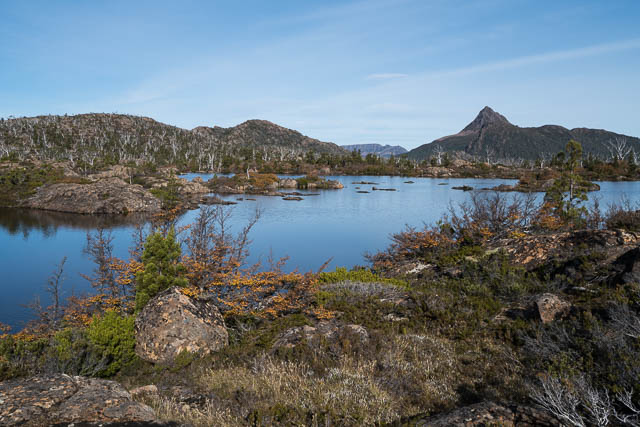

It was good to be back at one of my favourite places. Lake Elysia and the surrounding area is incredibly beautiful. I think it is one of the most beautiful places in the world. Elysia is the largest lake in the Labyrinth and is fringed with pencil pines and native deciduous beech – Northofagus gunnii (although this name could change). This was the “fagus” that I had sought. It is supposedly best to see it around the time of Anzac Day – that is when the leaves have changed from green to orange and are about to fall off. I had visited Tasmania during the past two Autumns – in 2014 the fagus changed late and I missed the best of it. In 2015 the fagus changed a bit early and we were too late to see the best fagus near Pine Valley. This year, I was a little late – it seemed that a fair bit of the leaves had already fallen off, but still a lot remained and some leaves were only just changing. Not bad I thought. Anyway look at the photos and judge for yourselves. The whole Labyrith is surrounded by a ring of mountains – the high peaks of the Du Cane Range. Conical Mount Gould, the broad bulk of the Guardians. The Parthenon and Minataur – lower peaks. The huge ramparts of Walled Mountain. The twins peaks of Eros and Hyperion. But best of all – the Geryon and the Acropolis. These are some of the best mountains in Tasmania.

I did not complain about the weather. It was fine and calm. But as a photographer it is easy to not be satisfied. Changeable weather is great for photography and dull weather is actually a much better time to photograph the colours of the fagus leaves. Sunsets without clouds are not that dramatic.

I thought back to my previous two trips to the Labyrinth. I last camped here in snow. It was very beautiful but quite cold and nasty to be outside the tent. That was in April 2014. In January/February 2014 I had also camped in the Labyrinth for a couple of nights. Conditions were as different as they could be – very hot weather. As well there was a plague of small black ants. So you could not sit outside the tent without getting stung. The only solution to both these problems was to swim in the lake. The water, for an alpine lake was very pleasant indeed and small islands provided refuge away from the ants.

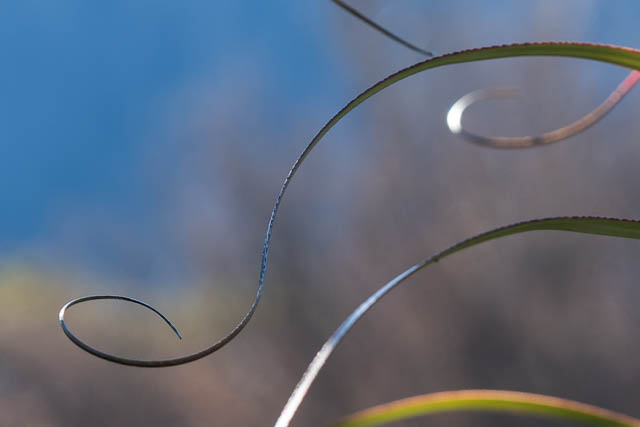
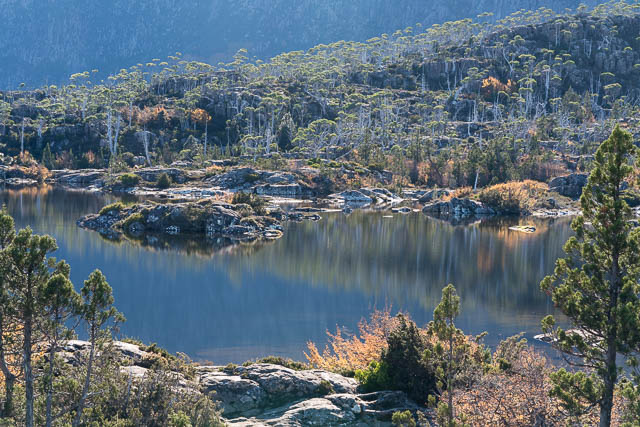
I did not have these problems this time. But no sooner had I set up my tent and got my gear organised that the peace was disturbed by the blaring of a radio. Rather than someone listening to the footy, it was part of a party in walkie talkie contact with one of their members who was making his way to the north peak of The Geryon. They were able to relay instructions and he was giving progress reports back.

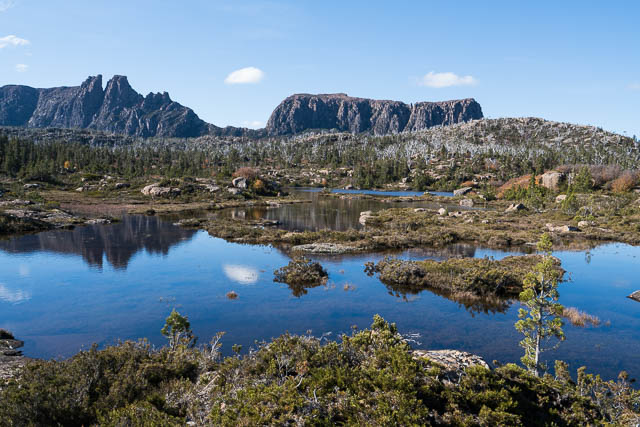
During sunset, the Geryon and the Acropolis glowed red and this did provide some photographic opportunities. But as a repeat visitor to this place – I have seen a lot better. The weather was too fine with no clouds in the sky. Dawn, was equally ordinary. At least there were some frozen tarns with their interesting patterns of icy panes.

I spent the day wandering wound the area. I walked to the Pool of Memories, often a place of very good fagus (it was) and also back to Lake Ophion and around its western end. The Labyrinth is certainly a nice place to spend some time in. Except for some wear and tear of the campsites at Lake Elysia and the tracks, I did not see too many signs of damage caused by visitors. No toilet waste or rubbish. Later, I spotted the remains of a small, recently lit campfire which was disturbing.

The whole Labyrinth seems to have a lot of very obvious dead Eucalypts. Their skeletons seem to remain for a long time. I speculated about their origin. There seems to be too many pence pines and fagus in the area for there to have been a bushfire for many many years. So what caused the dead Eucalypts? Looking at the still growing Eucalypts, they only just seem to be clinging to life. The trees are very spindly with only a few leaves. Perhaps it is the harsh cold windy environment? It may be too bleak for these trees to be healthy and they can die easily.


That evening, the sunset was like the day before. Nice but nothing special. Dawn, however was a lot better. This time it was atmospheric – a thick mist had rolled in. It was the time to photograph the fagus. I spent a few hours slowly wandering around the lake with my camera.





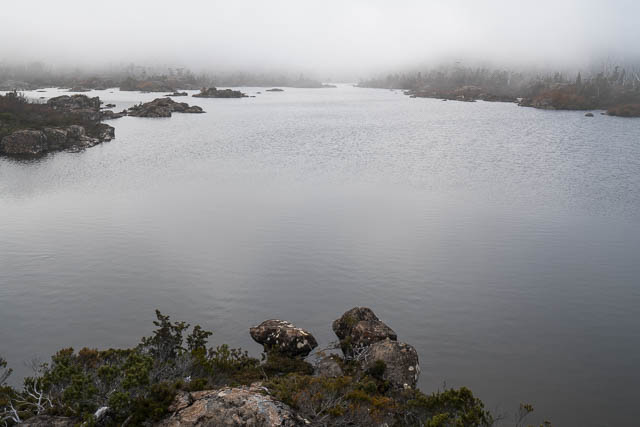



Later I moved camp to the Pool of Memories. This is only about 30 minuets walk away, but the ridge above the lake has some really nice fagus. Unfortunately, it was bright and sunny when I was there.


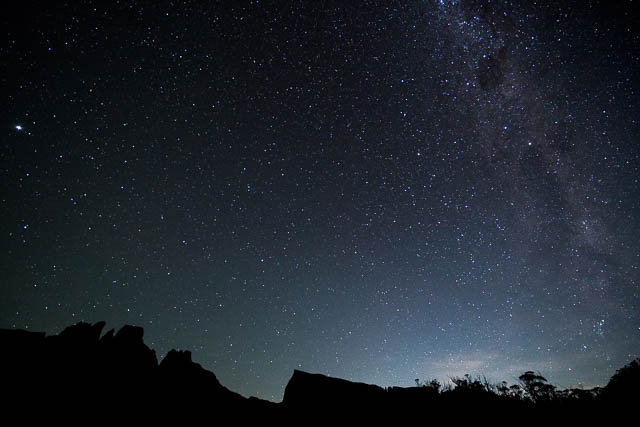
On the Tuesday, with the weather still fine, but now a bit windy, I moved back down to Pine Valley. I spent the next five night in the hut. Two of those nights I was the only person in the hut. On other nights there were 3 others, 2 others and 7 others.

I spent Tuesday afternoon photographing fungi close to the hut – along the Labyrinth and Acropolis tracks. The fungi was very good – both in terms of abundance and in variety.



Wednesday was the last fine day (and from there the forecast was not good as far as it stretched), so I headed up the Acropolis. On top, views were good. It was a clear sunny day, but very windy. You and to be careful not to be blow off, especially when trying to get photos of some of the pinnacles. The actual summit is a pinnacle separate from the summit plateau and it has to be climbed by peak baggers after their points. This makes the Acropolis one of the harder peaks in Tasmania to climb. On this trip, it was far too windy for me to contemplate this final scramble.


Sure enough that night it rained a fair bit. But the day was not too bad and I spent a very rewarding day photographing fungi further up the valley near Cephissus Creek. More rain overnight and the next afternoon was too wet to venture far from the hut. Very wet visitors were arriving, so I got the coal pot belly stove going so they could dry out. The hut was quite cosy.
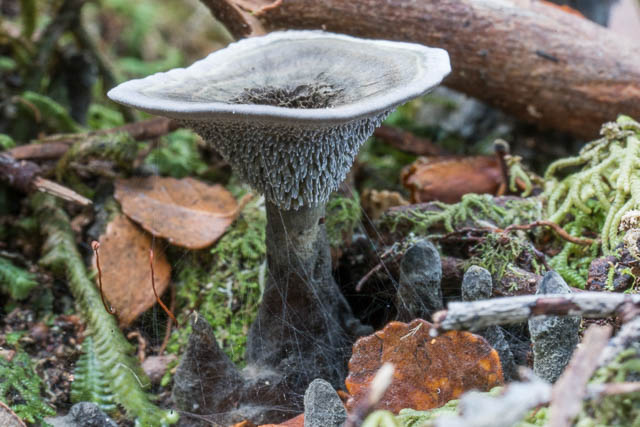
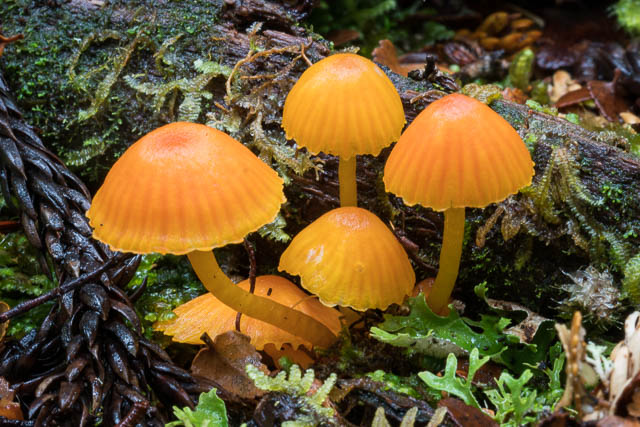





More rain overnight, but it did not last long into the morning. With the rain, Cephissus Creek was higher so I spent the day photographing the creek and fungi nearby. An old rack runs up Pine Valley to the climbers camp under the Geryon. This track can still be followed OK but it was nice to walk up off the track near the creek. Cephissus Creek seems to have an amazing umber of small waterfalls along its length. Higher up is also some beautiful deciduous beech.And the fungal abundance seems to increase further up the valley.



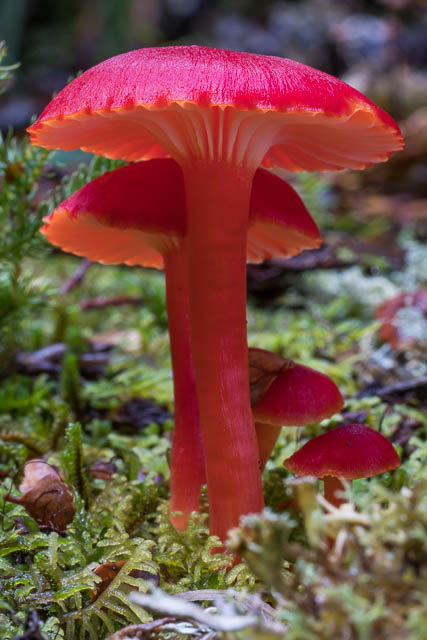








That night, I had the hut to myself and there was some very heavy rain. Next morning Cephissus Creek had broken its banks. it was impressive. During a break from the rain I grabbed some photos and went up to Cephissus Falls a few minutes upstream from the hut. I took a few hurried photos and headed back to the hut. I had packed up and was ready to walk down slowly to Narcissus. This is only a two hour walk, so I had plenty of time to take photos, if the weather permitted. It did, until the last crossing of the Narcissus River – only about 15 minutes before the hut. Heavy rain!



A lot of people where at the hut, but waiting outside for a ferry to take them down the lake. I had lunch indoors and waited during the afternoon. the rain continued – very heavy. More walkers arrived late in the afternoon. Very wet and cold. The hut was a welcome refuge for them.

Snow was visible on the peaks the next morning. Later the rain eased, and I headed off towards Echo Point. Again I intended to walk slowly and photograph the fungi. This worked out well – the rain generally held off.

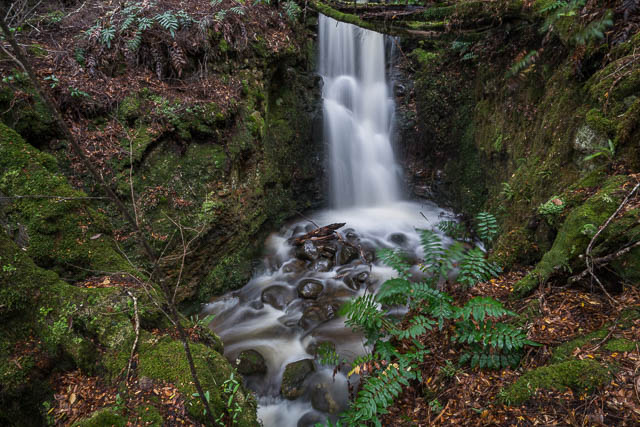


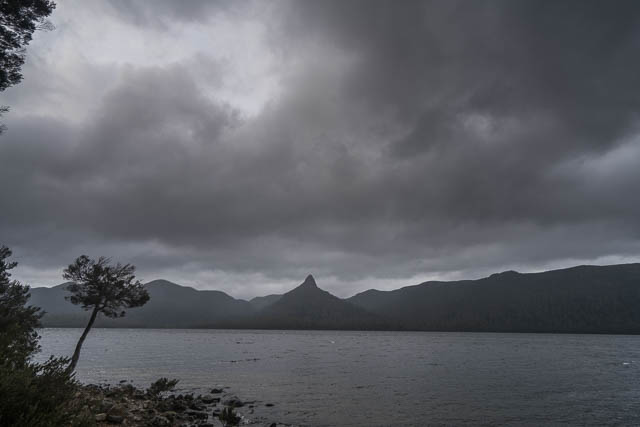
It was cold at Echo Point and I soon and the coal pot belly stove going in the hut. Later I was joined by two walkers from Belgium.


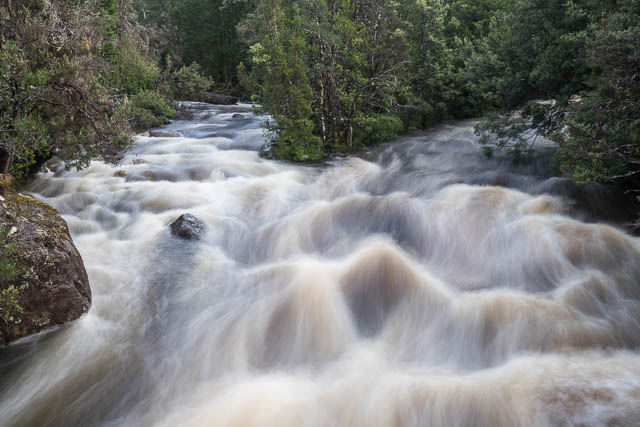
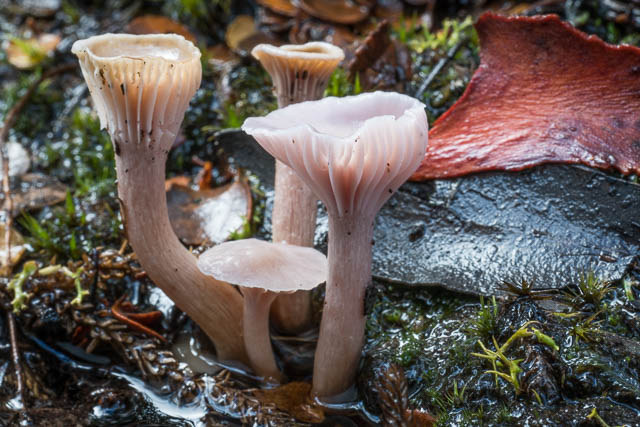


My last day on the track was another wet day, and I did not stop to take photos. This was a a Tuesday, and I and a booking on the bus to Hobart that Thursday, so I had a full day at Lake St Clair. I stayed overnight in one of the bunk rooms at the camping area and used the cafe at the visitor centre for meals. On the Wednesday, it had rained a lot more overnight and there was snow on the ground – but it melted fast. The peaks had a good cover. I spent the bulk of the day wandering up to Platypus Bay and part way up the Hugel River on the Shadow Lakes Track. There was an incredible amount of fungi out – so a lot more photography.







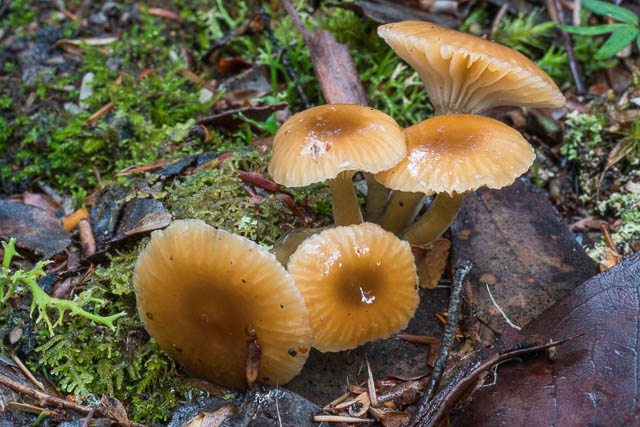
You can see a lot more of my photographs from the trip on my website here.

